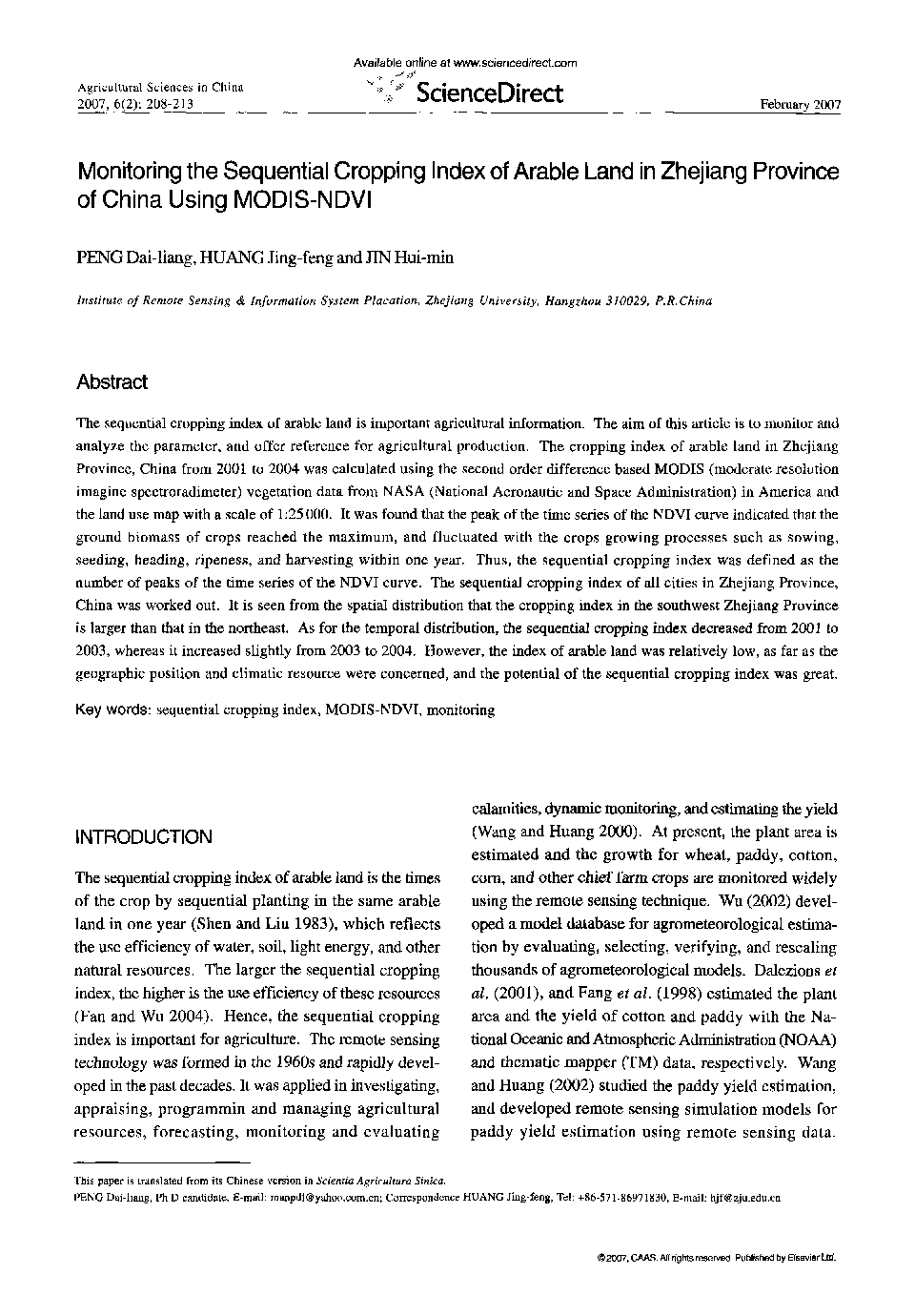| Article ID | Journal | Published Year | Pages | File Type |
|---|---|---|---|---|
| 4490900 | Agricultural Sciences in China | 2007 | 6 Pages |
The sequential cropping index of arable land is important agricultural information. The aim of this article is to monitor and analyze the parameter, and offer reference for agricultural production. The cropping index of arable land in Zhejiang Province, China from 2001 to 2004 was calculated using the second order difference based MODIS (moderate resolution imagine spectroradimeter) vegetation data from NASA (National Aeronautic and Space Administration) in America and the land use map with a scale of 1:25 000. It was found that the peak of the time series of the NDVI curve indicated that the ground biomass of crops reached the maximum, and fluctuated with the crops growing processes such as sowing, seeding, heading, ripeness, and harvesting within one year. Thus, the sequential cropping index was defined as the number of peaks of the time series of the NDVI curve. The sequential cropping index of all cities in Zhejiang Province, China was worked out. It is seen from the spatial distribution that the cropping index in the southwest Zhejiang Province is larger than that in the northeast. As for the temporal distribution, the sequential cropping index decreased from 2001 to 2003, whereas it increased slightly from 2003 to 2004. However, the index of arable land was relatively low, as far as the geographic position and climatic resource were concerned, and the potential of the sequential cropping index was great.
